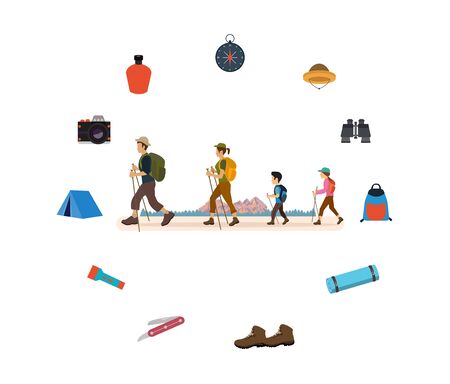1. Understanding the Link: Dirty Surroundings and Common Diseases in India
In the heart of India’s vibrant cities and rural landscapes, the connection between dirty surroundings and the spread of diseases is both immediate and alarming. The monsoon rains, bustling markets, and crowded localities often create perfect conditions for stagnant water and waste accumulation—ideal breeding grounds for disease-causing germs. Everyday life in India, from the narrow lanes of Old Delhi to the sprawling chawls of Mumbai, brings people face-to-face with risks like dengue, cholera, typhoid, and diarrhoea. Mosquitoes thrive in waterlogged drains after a downpour, spreading dengue fever quickly through communities. Meanwhile, open defecation and uncollected garbage contaminate water sources, making cholera and typhoid persistent threats in both urban slums and rural villages. Diarrhoea remains one of the leading causes of illness among children, largely due to unsafe drinking water and poor sanitation practices. In such environments, even a small oversight can lead to an outbreak. Recognising these everyday realities is key to understanding how deeply hygiene—or the lack of it—shapes public health across India.
2. Spotting the Symptoms: Early Signs to Watch Out For
In Indian homes, especially during monsoon or in crowded localities, diseases linked to dirty surroundings can sneak up fast. Recognising early warning signs is crucial for timely action. From water-borne illnesses to mosquito-related fevers, symptoms may overlap, but some key indicators are unique. Here’s a handy guide for families to keep an eye out and act before things get worse.
Common Early Symptoms in Indian Households
| Disease Type | Early Signs & Symptoms |
|---|---|
| Dengue/Malaria/Chikungunya (Mosquito-borne) | Sudden high fever, severe body ache, headache behind eyes, joint pain, skin rash |
| Typhoid/Cholera (Water-borne) | Continuous fever, stomach pain, loose motions, vomiting, dehydration, loss of appetite |
| Diarrhoea/Dysentery | Frequent loose stools, abdominal cramps, weakness, mild fever |
| Skin Infections (Ringworm/Scabies) | Itchy rashes, redness, blisters or small boils especially between fingers/toes or on scalp |
Local Warning Signs Not to Ignore
- If a child stops playing suddenly and complains of tiredness or stomach ache after eating street food or drinking tap water.
- Unusual odour from wounds or skin lesions after contact with stagnant water.
- Persistent cough or breathing trouble in areas with open garbage dumps nearby.
Why Early Detection Matters in India
With extended families often living together and limited access to quick medical help in rural areas, being able to spot these early symptoms can save lives. Don’t brush off complaints—early intervention is always easier than late treatment. If you notice any of these signs, take basic precautions immediately and consult your local doctor or community health worker without delay.

3. Jugaad First Aid: Immediate Steps for Indian Households
India’s spirit of “jugaad”—finding clever, low-cost solutions with what you have—can be a lifesaver when illness strikes due to dirty surroundings. Here’s how Indian families can respond swiftly with practical first aid using household items:
For Diarrhoea and Stomach Upsets
If someone has loose motions, dehydration is the biggest threat. Quickly prepare an ORS (Oral Rehydration Solution) at home by mixing one pinch of salt and six teaspoons of sugar in one litre of boiled and cooled water. Use a clean steel glass or bottle. Give small sips frequently. Avoid street food and use only filtered or boiled water.
For Skin Infections and Rashes
Common due to stagnant water or unclean surfaces. Wash the affected area gently with soap and clean water—Dettol or Savlon if available. Apply turmeric paste (haldi), a traditional antiseptic, or aloe vera gel if you have the plant at home. Cover loosely with a clean cotton cloth to avoid further irritation.
For Mosquito Bites and Dengue/Chikungunya Symptoms
If bitten, apply coconut oil mixed with a bit of camphor (kapur) to reduce itching and swelling. For fever, keep the patient hydrated and give paracetamol (not aspirin). Use neem leaves under beds or burn dried neem to repel mosquitoes at night. If high fever persists for more than two days or there are signs of bleeding, visit the nearest clinic immediately.
When to Seek Professional Medical Help
- If diarrhoea leads to persistent vomiting, blood in stool, or lethargy
- If skin wounds become red, swollen, or start oozing pus
- If fever remains high for 48 hours despite basic care
Remember:
While jugaad works wonders in emergencies, do not delay seeking help from your local doctor (family physician), government PHC (Primary Health Centre), or trusted hospital if symptoms worsen or don’t improve within a day or two. Swift action saves lives—combine traditional wisdom with timely medical advice for the best results in every Indian home.
4. Swachh Bharat at Home: Everyday Prevention Tips
Simple Steps for a Clean and Healthy Household
Maintaining cleanliness at home is the first line of defence against diseases caused by dirty surroundings. Inspired by the Swachh Bharat Abhiyan, these daily practices are easy to follow and make a big impact in Indian homes.
Daily Routines to Keep Illnesses at Bay
| Practice | Description | Why It Matters |
|---|---|---|
| Regular Sweeping and Mopping | Sweep and mop floors daily, especially in kitchens and bathrooms. | Prevents accumulation of dust, germs, and pests. |
| Proper Waste Disposal | Segregate wet and dry waste; use covered dustbins; dispose garbage daily. | Avoids breeding of flies, mosquitoes, and rats that spread disease. |
| Handwashing Habits | Wash hands with soap after using the toilet, before eating, and after handling garbage. | Reduces risk of diarrhoea, typhoid, and other infections common in India. |
| Clean Water Storage | Cover water containers; clean them weekly; use boiled or filtered water for drinking. | Prevents waterborne illnesses like cholera and jaundice. |
Cultural Tips Tailored for Indian Homes
- Use neem leaves or phenyl for mopping floors — a traditional method to repel insects naturally.
- Encourage family members to remove footwear before entering living spaces to reduce dirt inside.
- If you have a courtyard (aangan), keep it free from stagnant water especially during monsoon season to prevent mosquito breeding.
Together for a Cleaner Community
When every household adopts these preventive steps, the entire mohalla (neighbourhood) benefits. Organise regular cleanliness drives (Swachhta Abhiyan) with your Resident Welfare Association or panchayat. By keeping your surroundings clean, you play an important role in protecting your family and community from diseases linked to unclean environments. Prevention truly starts at home — chalo, let us make Swachh Bharat a reality in our everyday lives!
5. Community Power: Mobilising Local Help and Spreading Awareness
When it comes to fighting diseases caused by dirty surroundings in India, individual efforts are just the starting point. The real power lies in communities coming together to create lasting change. From bustling metros to small towns, local collaboration is the backbone of a cleaner, healthier neighbourhood.
The WhatsApp Effect: Digital Swachhta Warriors
In every Indian city, neighbourhood WhatsApp groups have become more than just a place for festival greetings and missing pet alerts. Residents are now using these digital platforms to report garbage pile-ups, share updates about cleaning drives, and even circulate information on local disease outbreaks. By forwarding government advisories or tips in regional languages, these groups ensure that everyone—from aunties to college students—stays informed and vigilant.
Resident Welfare Associations (RWAs): Grassroots Guardians
RWAs are the unsung heroes of urban India. With regular meetings and strong local networks, they can arrange for community clean-up days, coordinate with municipal authorities for better waste collection, and enforce rules about segregating dry and wet waste. Many RWAs also organise workshops on first aid for water-borne or vector-borne diseases like dengue, chikungunya, and typhoid—arming residents with both knowledge and supplies.
Spreading Awareness: Sabka Saath, Sabka Vikas
Awareness campaigns led by schools, NGOs, or even local businesses play a huge role in shifting mindsets. Street plays (nukkad natak), wall paintings with health messages, or short cleanliness rallies can inspire both children and adults to take ownership of their environment. Sharing success stories from neighbouring areas motivates others to join hands—proving that “Swachh Bharat” is not just a slogan but a shared responsibility.
How You Can Join the Movement
Whether you’re in Delhi’s crowded lanes or a quiet Goan village, there’s always scope for action. Start by connecting with your neighbours; form or join a WhatsApp group focused on cleanliness. Volunteer during community clean-up events or offer your skills—like making posters or spreading messages in local dialects. Remember, when communities unite against dirty surroundings, they build a shield that keeps diseases at bay—and sets an example for the rest of India to follow.
6. Useful Helplines and Resources
If you or your family are affected by diseases linked to dirty surroundings, quick access to reliable information and help is crucial. India offers several helplines, apps, and websites to assist with sanitation issues, disease outbreaks, and medical emergencies. Keep these resources handy for a prompt response in any health situation.
Essential Government Helplines
- National Health Helpline (104): For medical advice on symptoms, first aid guidance, and disease prevention.
- National Ambulance Service (108): Toll-free for any urgent medical emergency across most states.
- Swachh Bharat Helpline (1969): Call for complaints related to sanitation problems or improper waste management in your area.
- Ayushman Bharat Helpline (14555): For queries about free or subsidised healthcare under the PM-JAY scheme.
Key Apps and Websites
- Aarogya Setu App: Provides information on infectious diseases, nearby health facilities, and self-assessment tools. Available in multiple Indian languages.
- mSwasthya App: Useful for rural areas—offers health tips, doctor consultations, and connects you to government hospitals.
- Swachhata-MoHUA App: Lodge complaints about garbage dumps, open drains, or unclean public places directly to municipal authorities.
- Ministry of Health & Family Welfare Website (mohfw.gov.in): Latest guidelines on disease prevention, outbreak alerts, and hygiene campaigns.
Additional Support Channels
- State-specific Health Portals: Most Indian states operate their own health helplines and websites for region-specific support. Check your state’s health department portal for details.
- Toll-free Child Helpline (1098): For children affected by illness or unsanitary living conditions.
Packed Your Kit? Stay Connected!
Just like a seasoned trekker wouldn’t venture out without a sturdy compass or a weatherproof map, always keep these helplines saved in your phone. With the right information at your fingertips, you can safeguard your family and community from diseases caused by dirty surroundings—no matter where the trail leads in our vibrant India.


